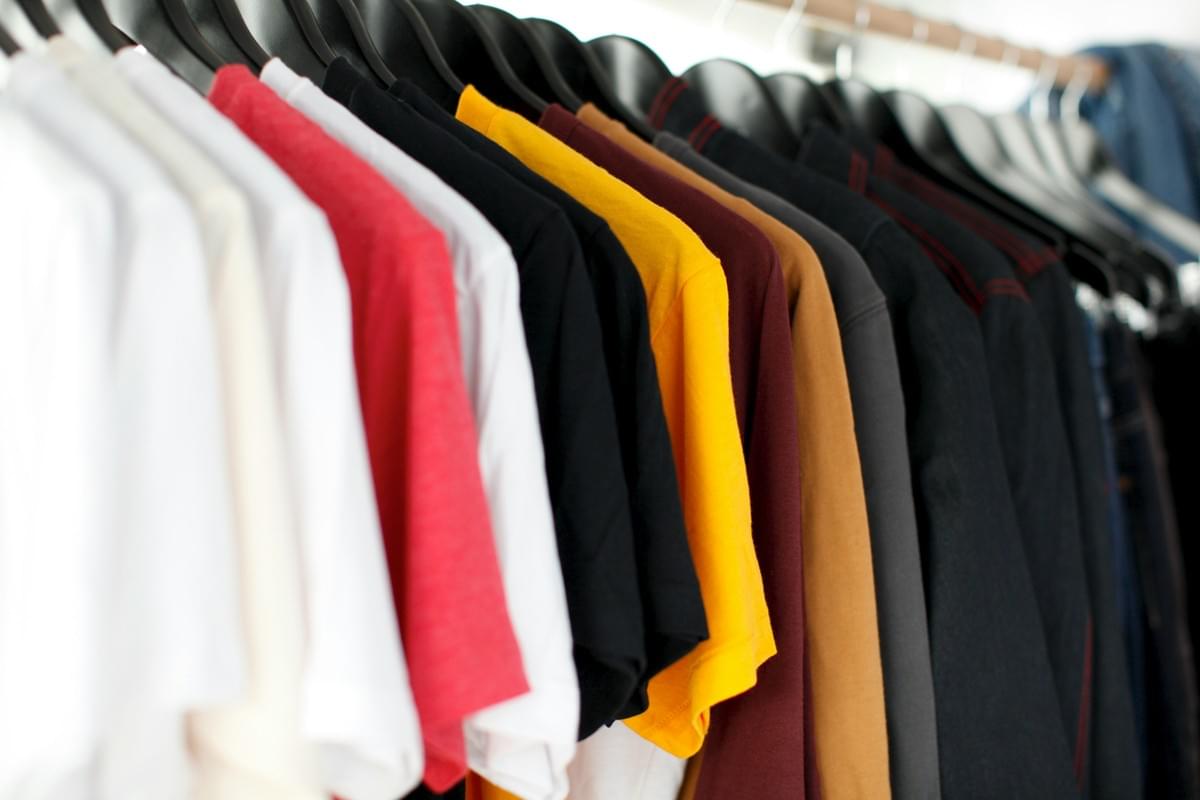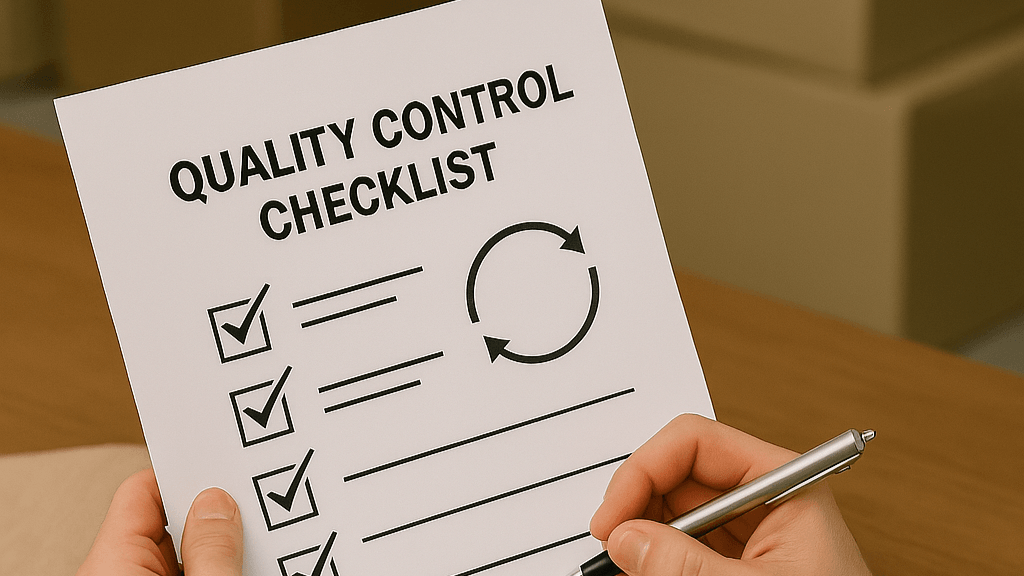Introduction
In the bustling marketplace of Amazon, understanding the nuances of Amazon Compliance is crucial for any apparel seller aiming to thrive. With a myriad of regulations governing product safety and labeling, compliance isn't just a legal obligation—it's a pathway to building trust with consumers and ensuring smooth operations. As we dive into the world of compliance, it’s essential to grasp both US Compliance Guidelines and EU Compliance Guidelines, which vary significantly yet hold equal weight in maintaining quality standards.
Understanding the Basics of Amazon Compliance
Amazon Compliance refers to a set of rules that sellers must adhere to in order to legally sell products on the platform. This encompasses everything from safety standards and labeling requirements to environmental regulations specific to different regions. For apparel sellers, understanding these guidelines is not just about avoiding penalties; it’s about fostering a reputation for quality that keeps customers coming back.
Importance of Compliance in Apparel and Textiles
The importance of compliance in the apparel and textiles industry cannot be overstated; it serves as the foundation upon which consumer trust is built. When products meet established safety standards, they not only protect consumers but also enhance brand loyalty and credibility. Ignoring compliance can lead to serious repercussions, including what are the risks of selling non-compliant products on Amazon, such as legal issues or negative impacts on sales performance.
Overview of US and EU Compliance Guidelines
Navigating through US Compliance Guidelines reveals a complex landscape filled with various regulations that govern everything from textile content labeling to flammability standards. Similarly, EU Compliance Guidelines impose strict requirements such as CE marking for textiles, ensuring that products meet high safety standards before reaching consumers' hands. By familiarizing themselves with both sets of guidelines, sellers can better position their brands for success across diverse markets while minimizing risks associated with non-compliance.
What is Amazon Compliance?

Amazon Compliance refers to the adherence to a set of standards and regulations that govern how products are sold on Amazon's platform. It ensures that sellers meet specific legal requirements, which can vary significantly between regions, especially when comparing US Compliance Guidelines and EU Compliance Guidelines. Understanding this compliance framework is critical for sellers in the apparel and textiles sector, as it directly impacts their ability to operate effectively and maintain customer trust.
Definition and Importance
At its core, Amazon Compliance encompasses all the necessary regulations that sellers must follow to legally sell their products on the platform. This includes everything from safety standards and labeling requirements to environmental considerations. The importance of compliance cannot be overstated; it not only helps avoid legal issues but also enhances brand credibility among consumers who increasingly prioritize ethical practices in their purchasing decisions.
Key Requirements for Apparel Sellers
Apparel sellers must navigate a myriad of requirements under both US Compliance Guidelines and EU Compliance Guidelines, depending on where they operate. Key aspects include proper labeling, ensuring materials meet safety standards, and adhering to consumer protection laws that govern product claims. Sellers should also be aware of specific restrictions related to certain fabrics or chemicals commonly used in clothing production; failing to comply can lead to severe repercussions.
How Compliance Impacts Selling Success
Compliance plays a pivotal role in determining selling success on Amazon. When sellers adhere strictly to compliance guidelines, they minimize risks associated with legal penalties or product recalls—both of which can severely damage reputation and sales performance. Moreover, compliant products often receive better visibility in search results, as Amazon prioritizes listings that demonstrate adherence to its policies over those that don't.
US Compliance Guidelines for Apparel

Navigating the world of US Compliance Guidelines for apparel can feel like walking through a maze, but understanding the relevant regulations is crucial for sellers on Amazon. These guidelines not only protect consumers but also help maintain a level playing field in the marketplace. By adhering to these standards, sellers can enhance their credibility and avoid potential pitfalls associated with non-compliance.
Overview of Relevant Regulations
In the United States, various regulations govern apparel compliance, including the Consumer Product Safety Improvement Act (CPSIA) and the Textile Fiber Products Identification Act. CPSIA mandates that all children’s clothing meet stringent safety standards to prevent hazards such as choking or suffocation. Understanding these regulations is essential for any seller aiming to ensure Amazon Compliance while also safeguarding their customers' well-being.
Moreover, compliance with state-specific regulations can also come into play, depending on where your products are sold. From flammability standards to chemical restrictions, each regulation adds another layer of complexity that sellers must navigate carefully. Ignoring these requirements could lead to hefty fines and even product recalls—definitely not something you want on your record!
Labeling and Safety Standards
Labeling is a critical component of US Compliance Guidelines for apparel, as it provides consumers with vital information about the products they purchase. Labels must include fiber content, care instructions, manufacturer details, and country of origin—failure to comply can result in penalties from regulatory bodies such as the Federal Trade Commission (FTC). Proper labeling not only helps you achieve Amazon Compliance but also builds trust with your customers.
Safety standards are equally important; they ensure that products are free from harmful substances and meet quality benchmarks set by authorities like ASTM International. Sellers should be aware that certain chemicals may be restricted or banned altogether in fabric production—this is particularly relevant when considering EU Compliance Guidelines as well! By ensuring your apparel meets both US and EU safety standards, you broaden your market reach while protecting your brand reputation.
Role of American Apparel & Footwear Association
The American Apparel & Footwear Association (AAFA) plays a pivotal role in shaping compliance practices within the industry by providing resources and guidance on best practices related to Amazon Compliance. They offer educational programs aimed at helping companies understand complex regulatory frameworks while promoting ethical manufacturing processes across global supply chains. By aligning yourself with organizations like AAFA, you can stay ahead of compliance trends and better navigate potential risks associated with selling non-compliant products on Amazon.
Additionally, AAFA frequently collaborates with government agencies to advocate for fair trade policies that benefit both manufacturers and consumers alike—fostering an environment where compliance becomes easier rather than more burdensome! Engaging with such associations not only enhances your knowledge base but also positions you favorably within an increasingly competitive market landscape.
EU Compliance Guidelines for Apparel

Navigating the landscape of EU compliance guidelines is crucial for apparel sellers looking to thrive on platforms like Amazon. With stringent regulations in place, understanding these requirements can make or break a seller's success in the European market. This section will delve into the key regulations, CE marking standards, and the processes involved in ensuring compliance.
Key Regulations in Europe
The European Union has established a robust framework of regulations that apparel sellers must adhere to under EU compliance guidelines. Key among these are the General Product Safety Directive and the REACH Regulation, which governs chemical safety in textiles. Sellers must familiarize themselves with these rules to avoid legal pitfalls and ensure their products meet safety and environmental standards.
Additionally, labeling requirements are critical under EU law, necessitating clear indications of materials used and care instructions on apparel items. Non-compliance with these regulations not only risks penalties but can also lead to removal from platforms like Amazon, severely impacting sales opportunities. Understanding these key regulations is essential for any seller aiming to maintain their standing in a competitive market.
CE Marking and Textile Standards
CE marking plays a pivotal role within EU compliance guidelines as it signifies that products meet essential health, safety, and environmental protection standards. For apparel items that fall under certain categories—like personal protective equipment—CE marking is mandatory before they can be sold in Europe. This mark assures consumers that the product complies with relevant legislation, enhancing trust and credibility.
Textile standards such as Oeko-Tex® certification further complement CE marking by addressing harmful substances used in fabric production. Sellers who prioritize compliance with such standards can differentiate their products based on quality assurance while adhering to Amazon compliance requirements simultaneously. By investing time into understanding CE marking and textile standards, sellers can navigate potential hurdles more effectively.
Navigating Registration and Compliance Processes
Successfully navigating registration and compliance processes within the EU requires careful planning and attention to detail from apparel sellers. The initial step involves registering products according to local laws while ensuring all documentation aligns with both US compliance guidelines (if applicable) and EU requirements for seamless entry into markets like Amazon’s platform.
Sellers should also stay informed about updates or changes to legislation that could affect their products' status; this vigilance helps mitigate risks associated with selling non-compliant products on Amazon or elsewhere in Europe. Utilizing resources such as trade associations or consulting experts can provide valuable insights into best practices for maintaining compliance over time.
In conclusion, understanding EU compliance guidelines is not just about avoiding penalties; it's about establishing a reputable brand presence amidst increasing regulatory scrutiny across markets.
What are the Risks of Selling Non-Compliant Products on Amazon?

Selling non-compliant products on Amazon can lead to a myriad of risks that every seller should take seriously. Understanding these risks is crucial for maintaining not only your business's integrity but also its profitability. In this section, we will explore the legal consequences, reputational damage, and potential supply chain disruptions caused by neglecting compliance with US and EU guidelines.
Legal Consequences and Penalties
Sellers may face fines, product recalls, or even lawsuits if their products do not meet safety standards or labeling requirements. The enforcement of these regulations is stringent; therefore, ignorance is not an excuse when it comes to compliance.
Legal issues arising from non-compliance can also lead to further complications such as increased scrutiny from regulatory agencies. This means that sellers who have already faced penalties might find themselves under a microscope for future products as well. Ultimately, the financial burden of legal consequences can be crippling for small businesses trying to thrive on Amazon.
Impact on Seller Reputation
Reputation is everything in the world of e-commerce; once damaged, it can be incredibly difficult to rebuild. Selling non-compliant products directly affects your standing in the marketplace and could lead to negative reviews and customer distrust. If consumers find out that your apparel does not meet compliance standards set forth by US or EU guidelines, they are less likely to purchase from you again.
In addition to losing customer trust, sellers may also face account suspensions or bans from Amazon itself due to repeated violations related to compliance issues. This kind of fallout can severely limit your ability to generate sales and grow your brand presence online. Therefore, maintaining strict adherence to Amazon Compliance is essential for protecting both your reputation and bottom line.
Disruption of Supply Chains
One often-overlooked risk associated with selling non-compliant products on Amazon is the potential disruption of supply chains. When compliance issues arise—whether due to recalls or legal actions—suppliers may hesitate or refuse future orders until matters are resolved satisfactorily. This hesitation can create gaps in inventory that prevent sellers from meeting customer demand consistently.
Moreover, navigating through compliance-related disruptions often requires additional time and resources that could have been spent on improving product offerings or marketing strategies instead. The ripple effect caused by supply chain disruptions underscores how critical it is for sellers to prioritize adherence to US Compliance Guidelines and EU Compliance Guidelines right from the start. By ensuring that all products are compliant before they hit the market, sellers can avoid unnecessary headaches down the line.
Ensuring Quality Through Inspections

In the world of apparel sales, ensuring quality through inspections is not just a best practice; it's a necessity that can make or break your business. With the stringent Amazon Compliance standards, along with US Compliance Guidelines and EU Compliance Guidelines, sellers must prioritize quality to avoid pitfalls. A robust inspection process safeguards against non-compliance risks, which can lead to legal issues and damage to reputation.
Importance of Quality Inspection
Quality inspection serves as the first line of defense against potential compliance violations that could jeopardize your Amazon business. By adhering to US Compliance Guidelines and EU Compliance Guidelines, sellers can ensure their products meet safety and labeling standards before they hit the market. This proactive approach minimizes risks associated with selling non-compliant products on Amazon, thereby protecting both consumers and sellers alike.
How China Inspection Pro Can Help
China Inspection Pro specializes in providing comprehensive quality control services tailored for apparel sellers navigating the complexities of Amazon Compliance. Their expertise ensures that products align with both US and EU Compliance Guidelines by conducting thorough inspections at various stages of production. By partnering with such professionals, sellers can confidently mitigate risks associated with non-compliance while enhancing product quality.
Implementing Inspection Processes for Compliance
Implementing effective inspection processes is crucial for maintaining compliance in today's competitive landscape. Start by establishing clear criteria based on US Compliance Guidelines and EU Compliance Guidelines to evaluate product quality consistently. Regular audits and checks will not only help you avoid selling non-compliant products on Amazon but also foster a culture of quality assurance within your supply chain.
Conclusion
Navigating the world of Amazon Compliance can feel like trying to find your way through a maze blindfolded. With various regulations and guidelines, both in the US and EU, it’s crucial for sellers to understand the compliance landscape fully. By staying informed about these requirements, sellers can not only avoid pitfalls but also enhance their business's overall success.
Navigating the Complex World of Compliance
Understanding US Compliance Guidelines and EU Compliance Guidelines is essential for any apparel seller on Amazon. These regulations are designed to protect consumers and ensure that products meet safety standards, which is why compliance is non-negotiable. By familiarizing themselves with these guidelines, sellers can minimize risks associated with non-compliance and create a solid foundation for their business.
Future Trends in Apparel Compliance
As e-commerce continues to evolve, so too will the landscape of Amazon Compliance. Emerging trends indicate a growing emphasis on sustainability and ethical sourcing within compliance frameworks, particularly in the apparel sector. Sellers should anticipate changes in regulations that prioritize environmental impact and consumer safety while adapting their practices accordingly.
Resources for Continuous Learning on Amazon Compliance
To thrive in this complex environment, sellers must seek resources that provide ongoing education about compliance requirements. Websites dedicated to US Compliance Guidelines and EU Compliance Guidelines offer valuable insights into regulatory changes and best practices for maintaining compliance on Amazon. Additionally, joining industry associations or forums can provide networking opportunities and access to expert advice on what are the risks of selling non-compliant products on Amazon.
